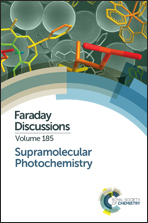Fluorescent logic systems for sensing and molecular computation: structure–activity relationships in edge-detection
Abstract
Molecular logic-based computation continues to throw up new applications in sensing and switching, the newest of which is the edge detection of objects. The scope of this phenomenon is mapped out by the use of structure–activity relationships, where several structures of the molecules and of the objects are examined. The different angles and curvatures of the objects are followed with good fidelity in the visualized edges, even when the objects are in reverse video.
- This article is part of the themed collection: Supramolecular Photochemistry

 Please wait while we load your content...
Please wait while we load your content...